A Correspondence with Julie Lequin
Two years ago French-Canadian artist Julie Lequin found herself on the road, about to turn thirty, and looking back. The experience inspired Top 30, a multidisciplinary video project condensing each year of her life. Effervescent with humor, woe, error, and play, Top 30 paws the line between autobiography and fiction. A generous helping of selections from this work in progress along with stills, watercolors, and Julie’s thoughts appears below.—Elaine Bleakney
Top 30 (Chapter 28), 2010; work in progress
AL
How did Top 30 become a formal project for you? Did the traveling you were doing at the time inform the way you shaped this work?
JL
I started thinking about Top 30 while attending a two-month residency in Nebraska during the winter of 2009. Nebraska was drastically different from what I had romanticized. I was expecting fields of corn filled with snow, incredible finds at thrift stores, unexpected fun conversations at music concerts. Instead the streets were grey, I shopped at Walmart, and there was zero social stimulation. I was stuck with boredom. Every Sunday was a tragedy because everything was closed. I was mad at myself for going for a residency in Nebraska. I was twenty-nine at the time and I started thinking I would be thirty in the spring…I was curious about what had “happened” to me all these years. I tend to have ideas for projects awhile before working on them.
Traveling has shaped some parts of this work. Yet traveling has also uninspired me. For instance I spent three months at Les Récollets in Paris in the fall of 2010. I was having the hardest time working on Top 30 there. I was lonely in a gold castle. The apartment and studio space I was given for the residency were amazing but I was miserable and found it hard to connect with Parisians. So while I was in Paris I visited Les Puces, walking everywhere, looking at clothes and architecture. I felt more like an observer and than a maker of something. Since returning from Paris I’ve made the decision to work at home in Montreal, and it has been good since.
AL
Disconnections from people and places are so vital in your work. And difficulty in communication—would you write a bit about the story you chose to represent your twenty-eighth year? How did this story become the one that you wanted to tell?
JL
The choices I made in telling this story came very naturally. I received my MFA from the Art Center in Pasadena right before turning twenty-seven. I found graduate art school quite challenging, especially the social aspect of the program. The year after grad school was way more difficult and awkward (finding work, looking for the energy to work by myself in a studio, feeling a bit alone: no one looking at my work). Twenty-seven was a low point for me.
At twenty-eight, I moved in to a house in Highland Park with three roommates I didn’t know. The housemates were not artists. I felt safe, loved. They were interested in my projects and in me: they gave me back the energy and will to work.
Roommates, 2009;pencil and watercolor on paper from Chapter 28
At that time, it was very hard as a Canadian citizen to find work in the United States (unless I was an artist-assistant, something I was not interested in doing). I decided to try the residency path. I didn’t know anyone who had done that before, but I thought it could lead me in an interesting direction. I loved L.A. (still do) but I didn’t see myself there at thirty. And I wasn’t ready to move back to Montreal yet. I sent applications and everyday I would frantically wait for the mail man. He ended up bringing positive news (I got in to a few programs).
Disconnections from people and places was important (and still is), but I manipulate what you see by romanticizing, adding some fiction, editing. My reality is less dramatic.
Top 30 is autofiction, very different from my past projects Car Talk or True Stories. There are no goofy characters and less HA! HA! humor. There is still humor though, and that’s what keeps me working. I spend so much time with my projects and it’s important that I feel something like humor when I illustrate, write, and record my story. In a way, it’s pretty didactic, but that’s how I hope my work can relate to a diversity of viewers.
I understand how someone can feel and act, if they can’t fully express themselves. I am very interested in wordplay, mispronunciation, and translation. And even more now, as I live in Montreal (a fully bilingual city) where everybody speaks Franglish. Half of Top 30 will be in French (year zero to year fifteen), and the other half will be in English (sixteen to thirty), with subtitles.
AL
Speaking of wordplay, I love how “strike of mini-joys” ends the story in Chapter 28. The line has a way of feeling like confetti falling into the piece.
When you mention how it feels when someone can’t fully express herself—I would like to hear more of your thoughts about that. Do lines like “strike of mini-joys,” when they come to you in English, help smooth the difficulty of being understood in a way? Does having a different language to work within create a need to talk about your personal experience?
JL
When I write my narration, I first make a list of things I want to say. Then I think of the illustrations that will go with these things, making written notes about them on the printed list. Sometimes I just make up an expression based on an image (a drawing) I had envisioned. If I can understand the phrasing, even if it sounds weird, I assume that the viewers will be able to understand as well. (Or they won’t and they will imagine something else.) Like I said before Top 30 is bilingual and now I am writing in French. The process is similar but when I work in my native language, I feel like there is less play.
I Wanted to Become a Secretary, 2010; pencil and watercolor on paper from Chapter 17
I moved to San Francisco in the fall of 2001 to do a post-bacc certificate at the Art Institute. I barely spoke English at the time. I remember arriving with one red suitcase, checking in at the hostel for a week, and looking for a place to live in the Mission. I could barely make a phone call in English. I had to use of a lot of charm, pizzazz, and really I had to learn to repeat expressions the way I heard them. Also I had to work on my accent in order to be understood. So basically I had to perform in my everyday. I wanted to communicate (I enjoy people) and it was so hard without words. I had to rely on body language, facial expression, and making my eyes speak. The year I was in San Francisco I learned a lot of English but I also developed a lot of “acting” skills without realizing it.
At the same time I became interested in storytelling. I did my undergraduate work in painting and I was growing bored of making abstract paintings. I lost the fun. In San Francisco I started observing people and there was always a spark happening. I would try to describe to my patient roommates what I had seen. In order to keep their attention, I had to be funny, quick, and I had to reenact what had happened. So that’s basically how ideas about storytelling and performance started.
AL
When working on Top 30, do you imagine an ideal viewer, a person or persons you are talking to?
JL
I don’t imagine my ideal viewer, I just have an idea of an audience.
AL
Making lists comes up a few times in your stories. Do you have any memory about when you first started making lists and/or why? How did list-making became part of your creative process, rather than something mundane or behind-the-scenes?
JL
I remember my mother making lists when I was a kid. She had her own business and there was always something for her to do: a grocery list, a list of people to call, a list of things to write in a contract. She was writing a list and then she would lose it. I would laugh at her but nowadays I lose my lists too, and it’s terrible when it happens. (I recently lost the list of songs for the kids starring in Top 30. I had worked so much on this piece of paper! I found it again in a flat box full of drawings after I had stopped searching for it.)
Anxieties (as a Nice List), 2008; pencil and watercolor on paper from Chapter 28
Making lists became part of my life when I started learning English. I would look up the words of the things I needed to do or say in order to be more efficient in English. The process stayed when I attended graduate school. I was having a lot of flash ideas for projects and I was afraid to lose them. I would scribble each idea down and leave the list by my studio door.
To me lists have the potential to be incredibly narrative driven, insightful, and poetic—they can hold so much. Including lists in my art-making became more of an obvious choice for me after I made the book from my project The Ice Skating Tree Opera.
Top 30 (Chapter 29), 2010; work in progress
AL
Thinking about process, how did you go about choosing the girls and women who sing a song from each year of your life in Top 30?
JL
This is such a simple but complex question.
I was selective with the choice of singers. They had to look nice on camera and I had to see something about them that reminded me of myself at their age. (As you can imagine, it was very subjective.) I dressed them up with old clothes of mine or clothes I got at the thrift store—the clothing had to match the wallpaper background. Also—very important—I had to get along with the singer, we had to have a connection. I wanted to feel confident enough to give them directions and I wanted them to feel good on camera (even if they were nervous or shy.) I met with everybody once or twice before filming to get to know each other and rehearse. I kept repeating to them that mistakes were good.
Kelly, video still from Chapter 29
It was incredibly easy to recruit singers when I started the project in Los Angeles because everyone’s secret dream in L.A. is to be a star. Then I tried to search for singers in Paris (when I was in residency there) and it was an epic failure.
In Montreal the search went pretty smoothly. I noticed that the English-speaking schools were really into my project and forwarded my call to many of their students. I got a lot of help from people who had randomly heard of the project. (Strangers have such kind and generous hearts.)
Working with friends is very tricky. But I make exceptions in this project. For example, I’ve asked my friend Roxanne to be on camera with her daughter Colette to film the chapter for age one. At night Roxanne becomes Donzelle, a French-Canadian rapper. We are filming her segment soon. I cannot wait for that.
AL
Did you find that you were talking with your singers about the project at large? If so, did you find any new illumination about Top 30 during your collaborations with them?
JL
I started filming the people closer to my age and went gradually in descending order. I wasn’t sure how to talk to a twenty-year-old and a fifteen-year-old about the project. I figured that if I took it slow, gradually, the words would come. (They did.)
For the teenagers I said a tiny bit in order not to overwhelm them. They ended up going online and seeing clips of my work. For some of the kids, we would spend a few hours together because their parents were at work. It was really fun, something like a theme park. “A Day in the Studio with Julie.” We would rehearse, film, have popsicles, draw, go out and try on shoes, read graphic novels at the store.
Sometimes the singer would ask me why I picked this song or why I picked that outfit, and while explaining I would have to take notes because the question would make me remember an event from the past.
While organizing and collecting the clothes for each singer, I remembered being a preppie in my teen years. I had totally forgotten. I still like prep clothes and I LOVE the quest of searching for them at thrift stores. I would have never worn used clothes when I was a teen, I was way too proud. Also, now I cut my bangs myself—the opposite of prep.
Margo, video still from Chapter 12
One singer (Margo, twelve years old) asked me where I would usually listen to the song by Jean Leloup I had asked her to sing and I saw myself sitting in the middle row of the yellow school bus. This image reminded me of my cat (his name was Minou) who disappeared for a whole week when I was that age. Everyday after school my dad and I would go on walk around the perimeter of our property calling Minou, Minou. We thought we could hear cat meows but that was just crazy…there was no cat anywhere. We thought we might be going insane from sadness. A few days went by, Minou wasn’t back, and the meows persisted. My dad and I kept going out to find Minou, and we realized that the cat was actually stuck in a fifty-foot-tall tree by the river, one kilometer from our house. Someone with a big ladder truck came (either firemen or the person who cut trees) and Minou returned. He didn’t run away again.
Appeller Minou, Minou, Minou, 2011; pencil and watercolor on paper from Chapter 11
AL
In working with autobiographical material, do you ever experience anxiety that you’re misremembering? You mentioned before how awful it felt to lose that list of songs/singers—does forgetting part of your life cause you anxiety or pain?
JL
I’ve woken up in the middle of the night with a ball of stress on fire in my belly from being scared not to complete Top 30 on time. Or not finding a four-year-old singer (the search is still on.) But I’m not scared of misremembering. Not at all. I hope I don’t sound light-headed.
I think this is the charm of autofiction: I can do whatever I want with my narrative. Sometimes I misremember on purpose an episode I would rather forget than go deeply into. Or I go into fiction because it’s more fun to tell than the everyday.
AL
Do you ever have anxiety about how you represent others in your projects? Have there been experiences when someone mentioned in one of your projects had objections to the way you portrayed them?
JL
Well I remember on a few occasions that people were not “satisfied” or “intrigued” with the way I portrayed them.
1. My Dad in my submission to This American Life. He didn’t like anything about his character. In the project, I tell how my dad would pressure me to apply for a job at Cirque du Soleil. He had all these big hopes for my future and when I ask him in the project what is he doing today, he replies: “Oh I am just waiting to die, Julie.” He didn’t see any resemblance in the portrait I made of him with a captain’s hat. I personified him as more “pessimistic” than he is in real life. But still he said: “I never said such a thing, Julie.” I had to explain that some aspects of his character were exaggerated to make the story funny.
2. I sent an image of the mother character from True Stories, Almost to my mom. She was rather insulted about the look. She said: “I don’t look like that. Where did you get your inspiration from?” Her unhappiness didn’t last long though. And now every time a picture of this character is printed in a magazine, she is ecstatic and says “my picture is going to be in a magazine.” Ha! ha!
Mom Character, 2010; video still from True Stories (Almost)
I am usually not nervous about representing others in my projects because there’s always a bit of fiction added to the character. Generally my friends want to have a part in my work—they like it. For my next project, I’m designing a character for my boyfriend. He’s very good at newscaster voices.
AL
I wonder if Joyce Maynard will watch your video of Chapter 29.
JL
Oh yeah funny you ask about Joyce because we have been emailing lately, so she’s been on my mind. (I never told her that I mention her in the video…) She has a very good sense of humor and she probably understands autofiction better than anyone else.
Top 30 (Chapter 30), 2010; work in progress
AL
I’m curious about your influences. You mention Ghost World—is Daniel Clowes someone you like to read?
JL
YES I used to love Ghost World. I was amazed with the resemblance between the characters in the book and the film.
I am inspired by the morning radio podcast I listen to everyday on Radio-Canada (but they talk so much that I can’t listen to it in the morning), by conversations I overhear in the Metro, by people I see at the grocery store or the public library. The Ethicist and Savage Love are blogs and podcasts I like. I just enjoy the question-answer dynamic.
A great place for me is the thrift store where I usually get conversations with people I don’t know and weird outfits that I can run in the sewing machine. I am also inspired by images I see online and fashion blogs. I keep a file on my desktop of curious-interesting stuff. I try to stay away from art magazines as I find them depressing and not impressive.
Specimen tissue (fabric) #1, 2011; pencil and watercolor on paper from Chapter 3
All my books have been in boxes since June 2008—the time when I started doing residencies. A few weekends ago, I visited my storage (read: my parent’s apartment and garage), and got Matthew Brannon’s book out. I was happy to discover him again. His work is a mix of illustration and wordplay. I like his balance and structure.
This weekend I came upon this—Auerbach’s craft is so clever! It conveys a message. Her aesthetic is handmade yet calculated. I met her when I was living in L.A. and it is a pleasant surprise to see her work online.
I also love artist’s lectures. I really enjoy witnessing artists present themselves to a large audience. Tonight I go to see John Currin’s talk at the Musée des Beaux-Arts. I am curious to hear what he has to talk about for an hour. I wish there were most artists lectures in Montreal.
Generally, I like work that shows a skill, has a bit of humor and some narrative. I can’t say what artists I am really looking into right now but yesterday I stumbled on this site and I liked what I saw. It is fresh.
AL
I love you how you milk humor out of the question/answer dynamic (Car Talk makes me laugh especially.) Was there anything notable about John Currin’s talk last night? I’m curious about your take on his presentation.
JL
John Currin’s talk was light, honest, and generous. He kept referring to his wife—the whole time, she seems to be telling him what to paint a lot. I kind of liked that. He was dressed with a pastel-colored button down shirt, coat (with a little scarf in the front pocket), and a tie. (I am thinking of making his portrait.) It was terribly hot and humid in Montreal yesterday, I could not believe his outfit, though I enjoyed it. He looked like a business man. I liked that he talked about his personal life while showing his artwork. (Example: “I was in a terrible relationship at that time, so this is why the painting looks like that.” Or “my studio mate and I are butt naked in this painting.” The painting shows two men on a boat fishing.)
I enjoyed seeing his early paintings versus the pornographic work (which I didn’t know about). He showed the porn paintings very fast, like he was shy. Also, there was a set of plates that kept coming back in some paintings…he said: “oh I just put them down there, because there was room left at the bottom of the painting.” I loved that.
Fancy John Currin at the Musée Looking Like My Dad When He Was Young, 2011; pencil and watercolor on paper from Chapter 2
*
Julie Lequin’s Top 30 will be shown at the Crisp-Ellert Art Museum in St. Augustine, Florida from October 7 until November 24, 2011. She is the 2011 recipient of the Joseph S. Stauffer Prize from the Canada Council for the Arts. A book documenting her project The Ice Skating Tree Opera is available from 2nd Cannons. For more information about Julie and her projects, please visit julielequin.com.
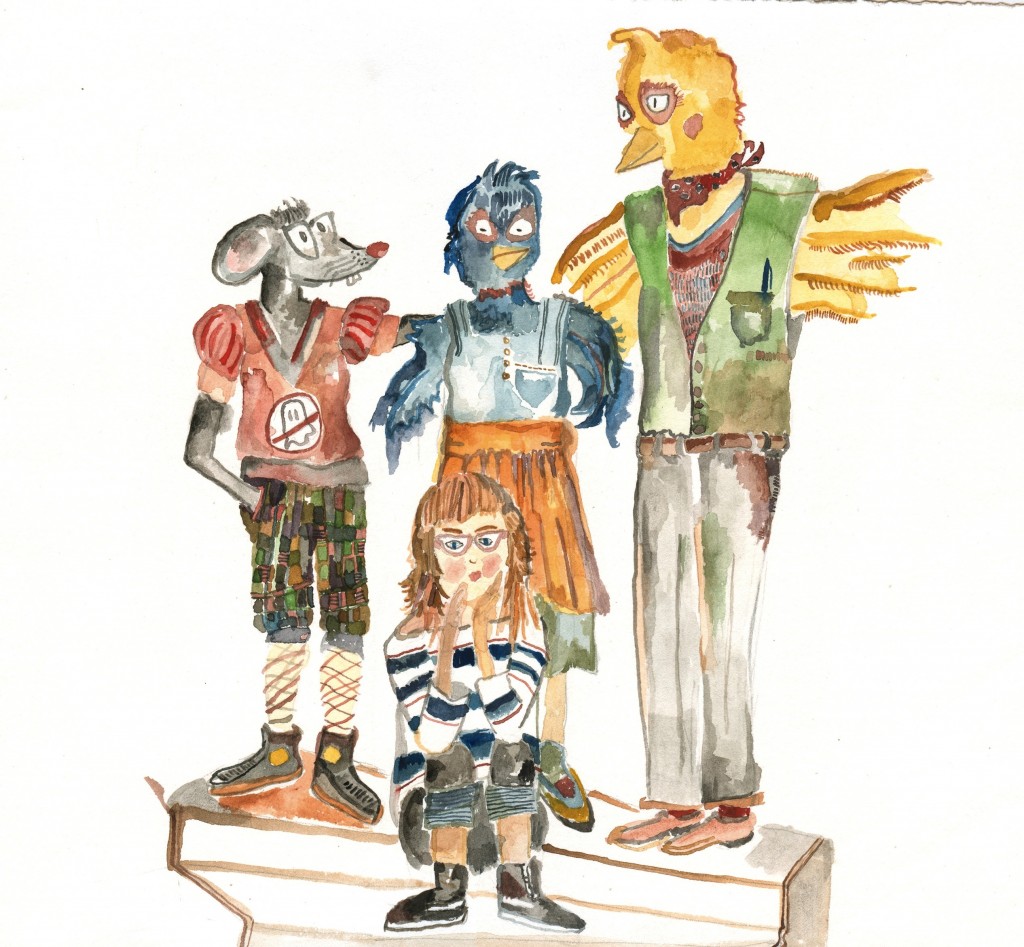
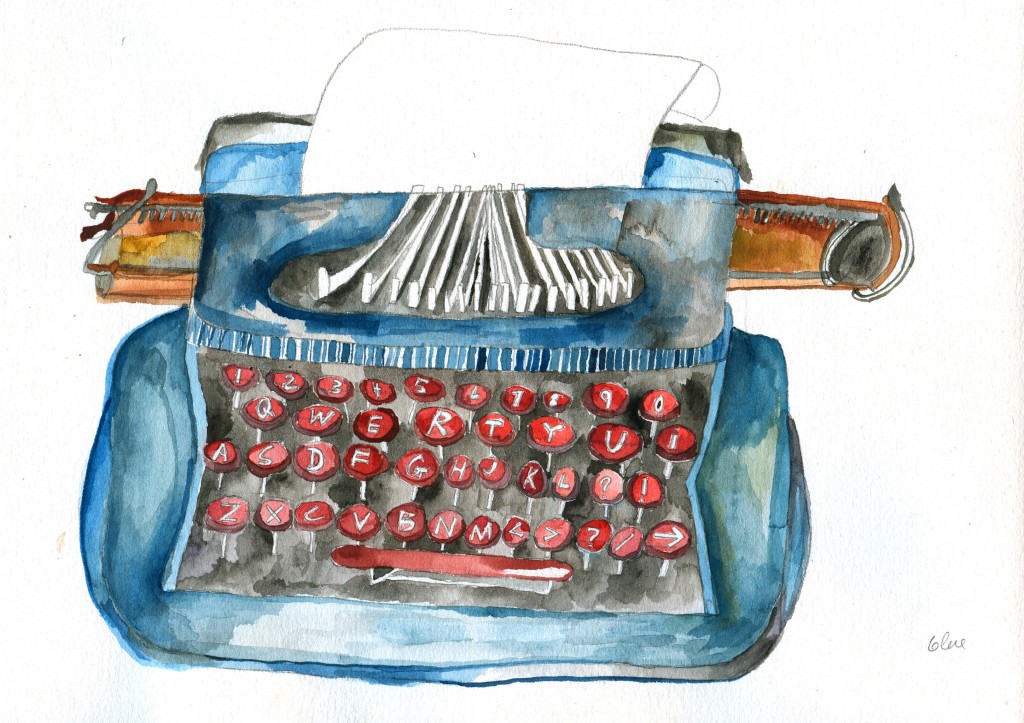
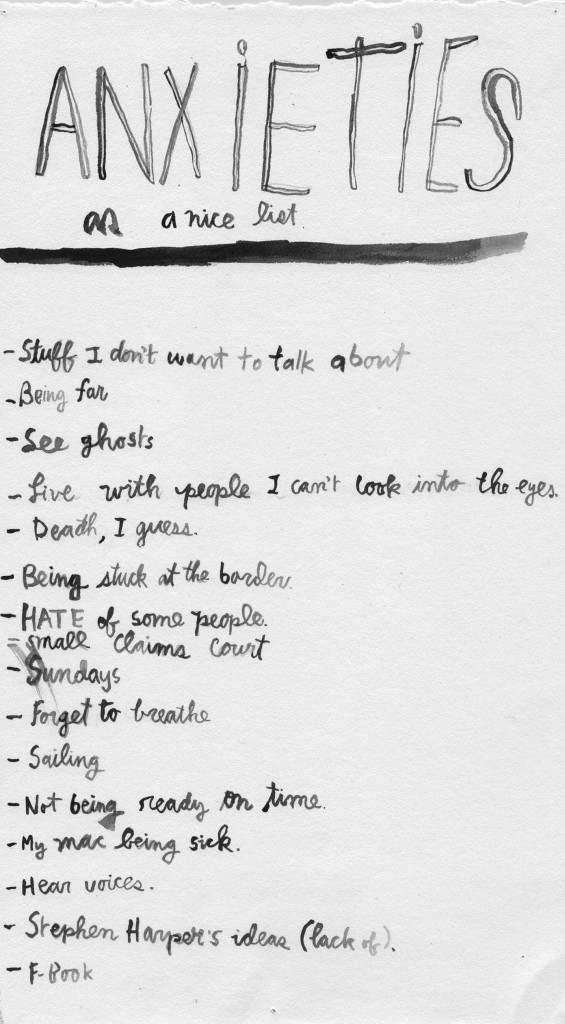

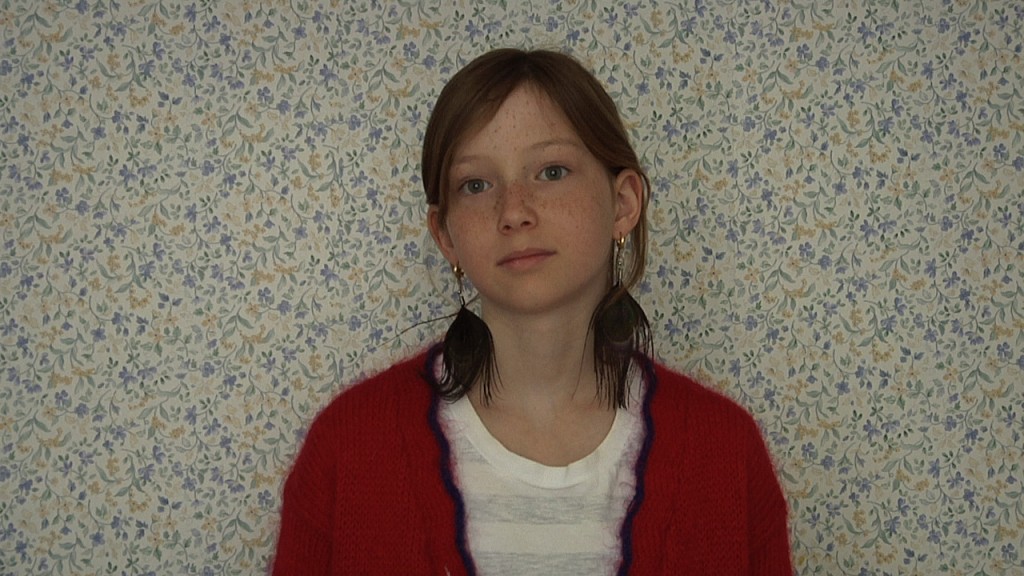



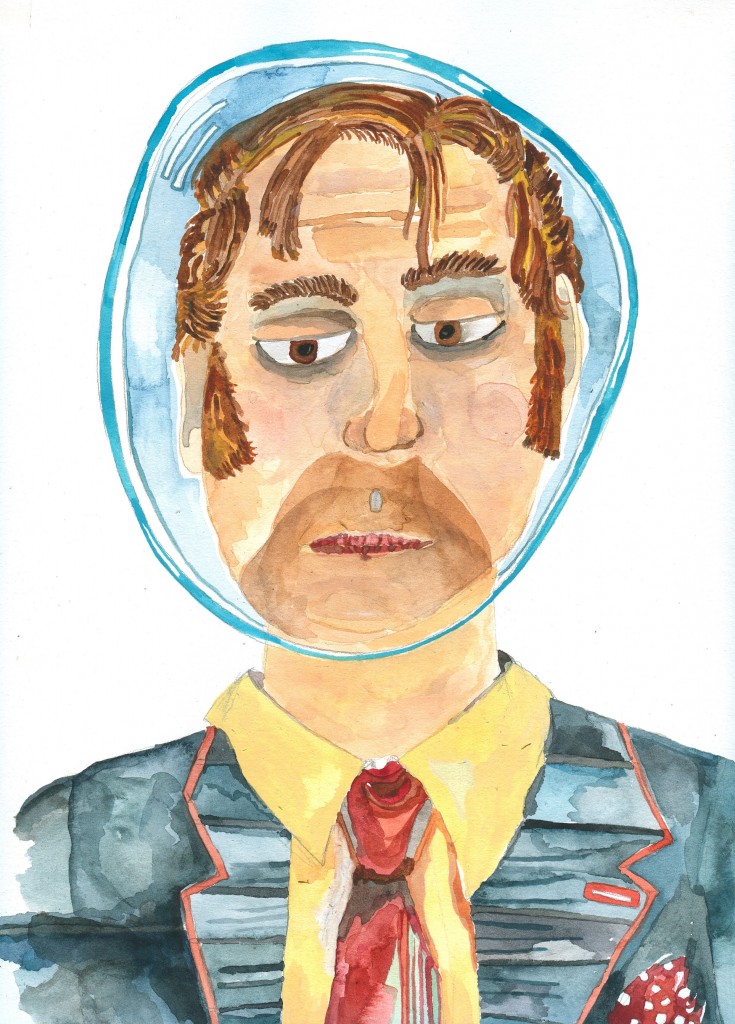
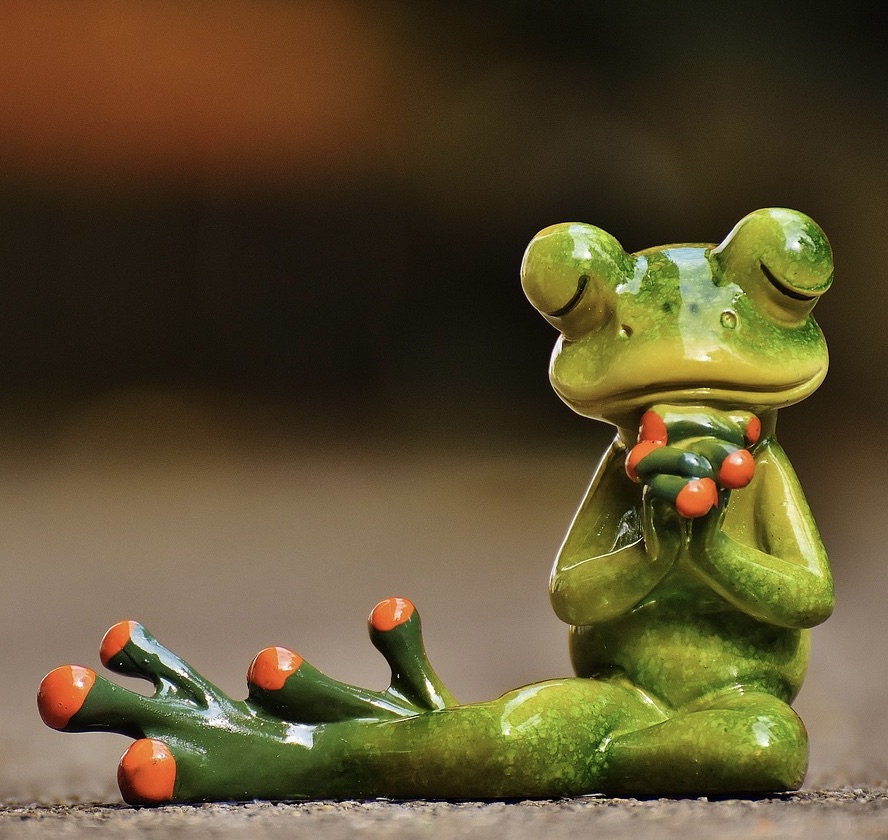
![Monument for Inger Christensen. Photo by David Stjernholm. Featured image for [o] by Kristi Maxwell.](https://atlengthmag.com/wp-content/uploads/2025/06/Monument-for-Inger-Christensen_Kaare-Golles_002_Photo-by-David-Stjernholm-1280x914-1.jpg)
